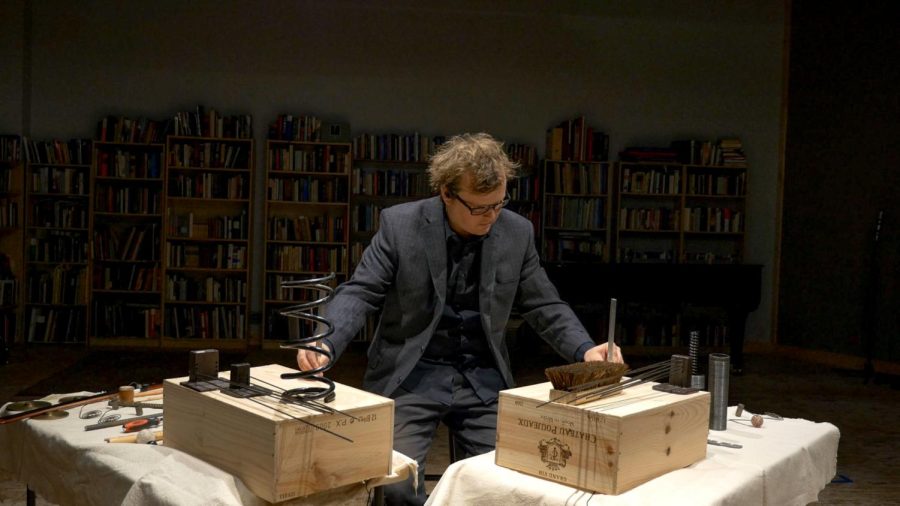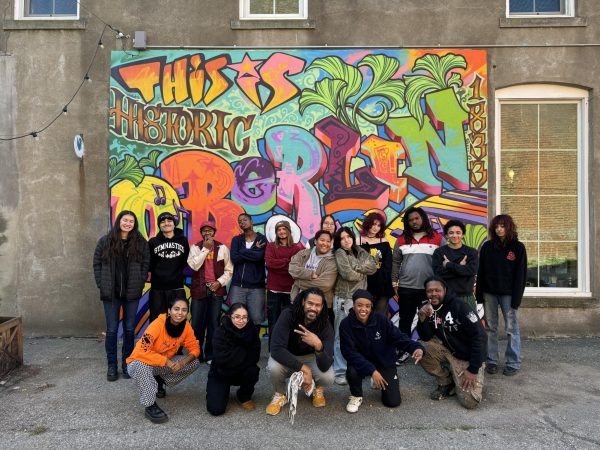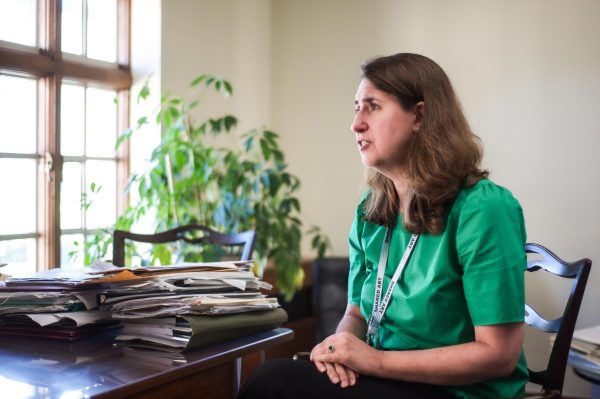On the Record with Ross Karre
Photo courtesy of Phyllis Graber Jensen
Associate Professor of Percussion Ross Karre
Ross Karre is an Associate Professor of Percussion at the Conservatory. Before working at Oberlin, he spent 11 years working with the International Contemporary Ensemble, where he took on a series of professional roles spanning from performer to production director. On Monday, Feb. 27, Karre gave a talk on professional development titled, “The Elephant and the Termite: A Look at the State of the Performing Arts Ecosystem.” Drawing from his experiences working within both arts organizations and university institutions, Karre reflected on some key takeaways from his talk and on the ins and outs of “creative producing.”
This interview has been edited for length and clarity.
You recently gave a talk about the structure of arts non-profit — could you tell me a little bit about your background in this field?
After graduate school, I moved to New York City, and in 2010, I started working as a percussionist for a group called International Contemporary Ensemble. This ensemble actually started at Oberlin in 2001 and has since become one of the nation’s largest contemporary music ensembles. Over time, I started to take on some more administrative roles and tried my hand at various parts of fundraising, concert organizing, staffing, and producing personnel management. That became a big part of what I did for the International Contemporary Ensemble, and by 2016, I was the artistic director of the group until I came to Oberlin in 2022.
Your professional development series emphasized the term “creative producing” and how we as individuals can work to productively exist within the arts non-profit complex. Could you speak about this term and what is required in these processes?
Creative producing is a term I learned from the arts administrator, academic, and teacher Diane Ragsdale. She now teaches at the Minneapolis College of Art and Design in its Arts Leadership program, but before that, she and I were faculty colleagues at the New School in New York City. Within that New School program, we were working together in a master’s program called the “Masters of Arts Management Entrepreneurship.” As faculty in that program, we were trying to find a more common term for the type of work that is basically creative producing, but not leaning on the conventional producing model. So, first, we’d have to define producing. Producing is basically starting from nothing as a group or a person, and then what comes out the other side is a production — it could be a theater production, music production, dance production, Spotify release; anything that’s related to arts that involves multiple people needs a producer. The producer’s role is to manage the human resources and the fiscal resources of a project, and in that management, they see it through from the beginning to the end. So in creative producing, we take a hybrid of that conventional producing and the artistic responsibilities that the director or choreographer or composer might have. For example, at the International Contemporary Ensemble, a musician in the group is also an administrator. In one moment, they’re playing violin for a concert, and the next moment, they’re organizing the schedule or budget for the next events. That’s what creative producing is.
What do you think are some major misconceptions students may have about becoming involved in these fields?
I think they exist on two poles. The skeptical or cynical misconception is that there’s no money available, so people should not make their own initiatives or start their own entrepreneurial company and should instead work for existing companies. That’s not necessarily true. There are resources. It takes time and it takes a lot of cross-fading of your current day job toward making this new entrepreneurial endeavor. But other than the time factor, the resources are there. The other pole is people who think that the money is readily availableand that it’s pretty easy to run out the gate, do something and expect to receive a grant. That’s also not true. The reality is that, after college, there’s going to be a mixture of working at an established organization part-time job and starting your entrepreneurial endeavor.
With such an emergent field, how does a student prepare to be a creative producer?
Most summer programs are a kind of stepping stone to this creative producing work. A perfect example might be the process of starting one’s own dance troupe, which really starts through finding a like-minded set of dancer colleagues that you would like to work with. Most of that happens when people meet each other during summer programs, many of which are specifically designed to be a launchpad from one thing to the next.
The other opportunity is called residencies, where you might have a residency with some of your artistic colleagues. During that residency, you might form the kind of core business model or organizational model of your troupe and then take it from there. That’s how most of these groups have started. They meet in college or in summer festivals or residencies and decide they have something in common artistically and would work well together. There’s also plenty of courses on this campus that will get you there. A big part of that work is taken up by the Pedagogy, Advocacy, and Community Engagement curriculum here, which is a community engagement curriculum at the Conservatory. If you’re an Oberlin student, those are some of the answers to that question.








